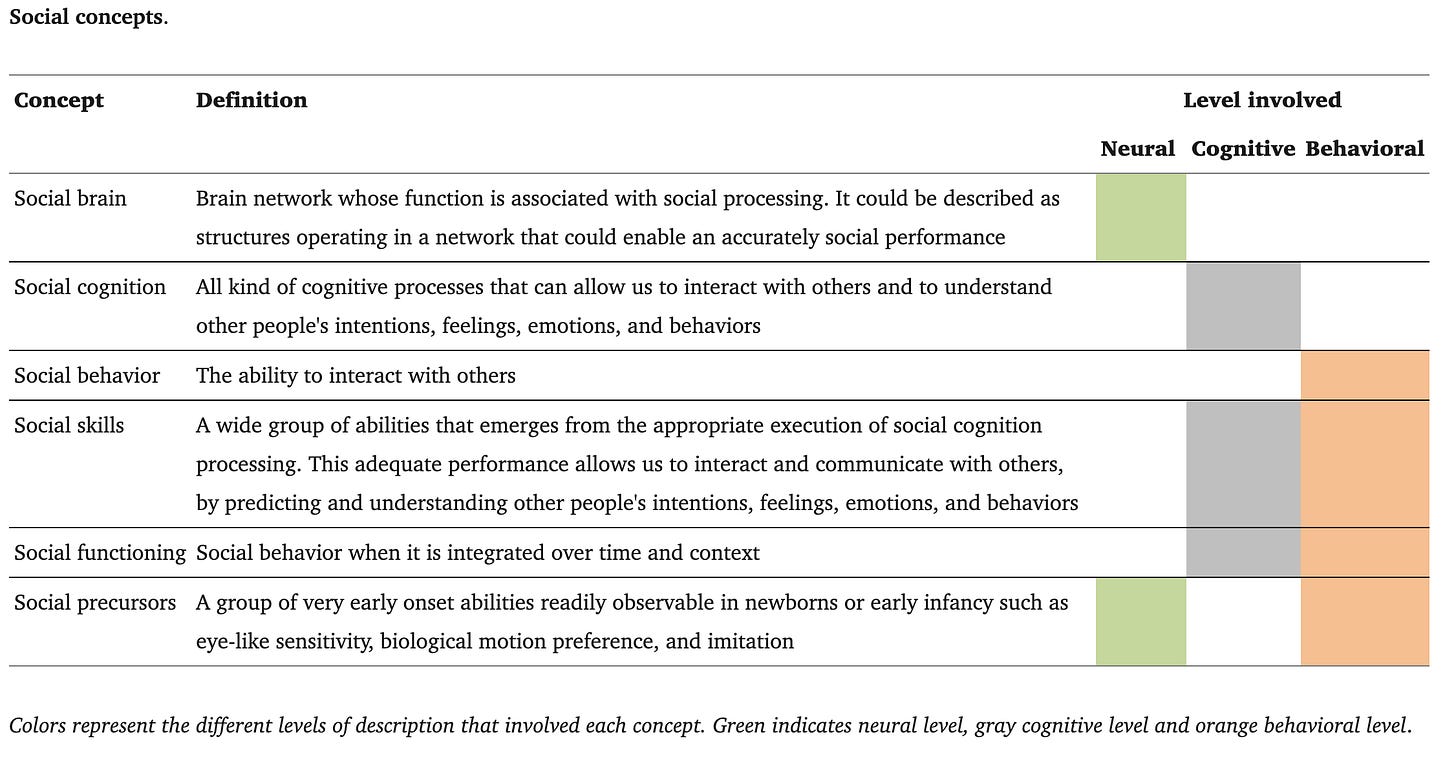Development of social skills in children: neural and behavioral evidence for the elaboration of cognitive models
By Patricia Soto-Icaza, Francisco Aboitiz, and Pablo Billeke
Letter 8 Resource: Link to Article
Abstract: Social skills refer to a wide group of abilities that allow us to interact and communicate with others. Children learn how to solve social situations by predicting and understanding other's behaviors. The way in which humans learn to interact successfully with others encompasses a complex interaction between neural, behavioral, and environmental elements. These have a role in the accomplishment of positive developmental outcomes, including peer acceptance, academic achievement, and mental health. All these social abilities depend on widespread brain networks that are recently being studied by neuroscience. In this paper, we will first review the studies on this topic, aiming to clarify the behavioral and neural mechanisms related to the acquisition of social skills during infancy and their appearance in time. Second, we will briefly describe how developmental diseases like Autism Spectrum Disorders (ASD) can inform about the neurobiological mechanisms of social skills. We finally sketch a general framework for the elaboration of cognitive models in order to facilitate the comprehension of human social development.
Introduction
Social cognition involves all the abilities that enable us to understand social agents and to interact with them. In this process, it is crucial to be able to predict the behavior of others, by detecting, analyzing, and interpreting their intentions. In this paper, we adopt a developmental perspective to clarify how social understanding evolves (Rao et al., 2008; Alaerts et al., 2011). For instance, during social development it is possible to observe social behavior precursors, which are necessary abilities for developing the capacity to deal with more complex social information (i.e., to deal with a group of people). Social skills, such as the detection of biology motion and sensitivity to eye-like stimulus, can be understood as precursors, not only because they appear first in human life but also because they are required for the acquisition of further social abilities, like face recognition or joint attention (Charman et al., 2001; Happé and Frith, 2014). Thus, these social precursors form a temporal sequence of events that may be needed to give rise to appropriate social behavior. Indeed, prior work has shown that the development of social skills encompasses a complex and delicate interaction between several elements, such as smiling, eye contact, imitation, joint attention, language, and the observer's own motor system among others. These elements play a role in the accomplishment of positive developmental outcomes, including peer acceptance, academic achievement, and mental health (Rao et al., 2008). Although this temporal sequence encompasses changes that can be observed at both neural and behavioral levels, the literature about social development has drawn up different concepts over the years. These concepts have been elaborated to construct cognitive models of social functioning that can explain the connection between behavior and brain mechanisms (Johnson, 2011). Even though in the literature the social cognition concept is commonly used as a good fit for this connection, an overview of social phenomena includes several concepts that interact and overlap each other, such as the social brain, social cognition, social behavior, and social functioning (Baars and Gage, 2012; Billeke et al., 2013a). We summarize some of the key concepts in Table 1.
Table 1.
Following the main contributions in this area, we will describe the most important evidence for the development of social skills at three levels, namely neuronal, cognitive, and behaviorally. While the neuronal and behavioral levels are an aspects that can be directly observed and measured, the cognitive one considers different models about how neuronal mechanisms lead to behavior (i.e., the way in which the brain is associated with behavior). Thus, we will organize this review in three sections. We will first make a timeline of the behavioral events that may be related to social development. Then we will draw a chronology of the appearance of neural and cerebral events that have been linked to these social behaviors. Second, we briefly review how conditions that involve primary social impairments, like Autism Spectrum Disorders (ASD), can inform about both the trajectory of social development and the neurobiological mechanisms related to the social behavior. Finally, we will sketch a general framework for the elaboration of cognitive models in order to facilitate the comprehension of human social development.
Read More: LINK TO FULL ARTICLE


